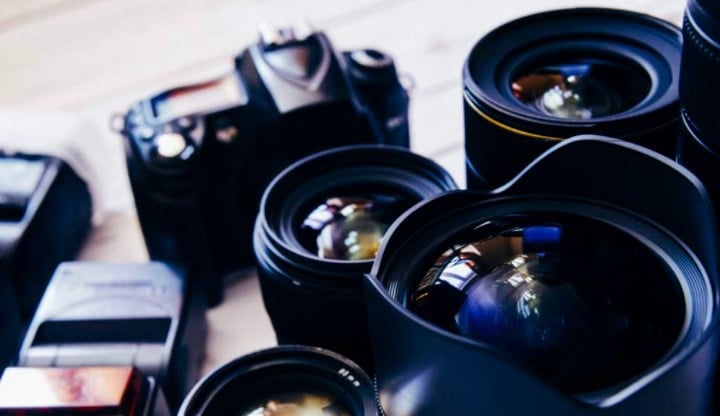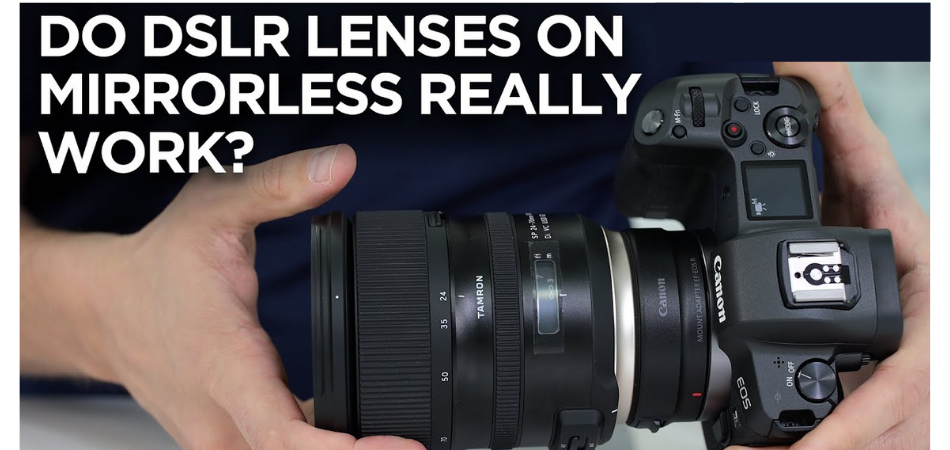When you consider buying a new camera, such as a mirrorless camera, you may wonder if your DSLR lenses are compatible. You may have invested quite a bit of money in your lens collection and you likely don’t want to replace them.
Although you can use your DSLR lenses on a mirrorless camera, you may need an adapter to mount it. The adapter isn’t an expensive item, but it is necessary so that it can convert the signals between the lens and the camera.
What Happens When You Use a DSLR Lens on a Mirrorless Camera?
One thing that DSLR cameras and mirrorless cameras have in common is that you can use different lenses to take a variety of photographs. If you want to get a closeup, you can use a portrait lens. You can use a large zoom lens to take photos of objects that are off in the distance. There are different lenses for different types of photography.
Mirrorless cameras are relatively new, and they are becoming more popular. However, many photographers have a lot of money invested in their lens collections, so they don’t want to replace them all. Fortunately, you can use your DSLR lenses on your mirrorless camera as long as you have an adapter. Some camera makers offer an adapter for other lenses, but you need to be aware of a few things.
Potential Restrictions When You Use a DSLR Lens on a Mirrorless Camera
Although you can use your DSLR lenses on a mirrorless camera with an adapter, there are a few things that you should be aware of. First of all, some of the automatic features, such as the focus, may not work as reliably. In addition, you might only be able to use specific exposure modes and you may not be able to use all of the features on your camera.

Another issue is that you might have to choose a setting on your camera, such as “shoot without a lens.” You need to also consider the crop factor because, on most mirrorless cameras, a 50mm lens is a telephoto lens rather than a normal lens. The lens could be larger than the camera because they are made for use on a deeper camera, and the adapter makes it stick out even further. Finally, the older lenses don’t always perform as well on the newer cameras.
How to Use a DSLR Lens on a Mirrorless Camera
Once you use the adapter to mount the DSLR lens on the mirrorless camera, you can use them together. The adapter is important because it compensates for the flange distance. This is the distance from where the lens is placed and where the sensor is in the frame.

You should try to purchase a mirrorless camera that is the same brand as your DSLR lenses. You may not be able to use all of the features of your camera if you mix and match the brands. Another important thing to note is that you cannot use a mirrorless camera lens on a DSLR camera. There is no adapter for this, and it won’t function.
What Are First-Party Lens Adapters?
First-party lens adapters are offered by brands so that you can use their older lenses on your mirrorless cameras. This makes the process of switching over pretty simple. Canon offers adapters for its mirrorless cameras, and they work with compatible third-party brands such as Tamron and Sigma as well.
Nikon also offers an FTZ adapter for its lenses, which gives full support. However, it won’t support autofocus on older lenses. Sony makes adapters for its lens as well, so you get pretty full functionality when you use their lenses on their cameras.
What Are Third-Party Lens Adapters?
Third-party lens adapters are adapters that are available by other companies. Some of them simply allow you to mount your lens, while others add support for autofocus. Sigma offers adapters that work with Canon and Sony cameras, and other brands also target the Canon lenses. It is more difficult to use a Nikon lens on other systems, and it can cause issues and possibly damage your camera if you don’t stick to compatible adapters and lenses.
Specialty Lens Adapters and Manual Focus
If you want to buy a less expensive lens adapter, you will need to give up autofocus support. There are generic lens adapters that work well as long as you can use manual focus. You need a lens that offers manual focus and its aperture control ring. However, if your SLR lens doesn’t have manual aperture control, you can get an adapter that allows you to control it.
Other adapters have a built-in neutral density filter. This is a specialty filter that reduces the amount of light that enters the camera, which allows you to control your shutter speed so that you can make long-exposure images.
Another type of adapter has a helicoid extension that allows you to space the lens properly so you can use infinity focus. You can also move it further away from the image sensor by twisting the control ring so that you can do close-up photos.
Three are other types of adapters as well. You have a lot of different options, so if you are working on specialized photography, you can find adapters that will help to ensure that your lenses can do what you need them to do.
Final Words
Many camera makers are putting out mirrorless cameras as the next great thing. These cameras expose the sensor directly to light, which gives you a live preview of your scene. DSLR cameras bounce light off a mirror to the viewfinder. These cameras are more compact and lighter, which makes them more portable.
Many photographers already have a collection of different lenses and they can be significantly valuable. They want to be able to use these lenses on their new mirrorless cameras. Although this wasn’t possible when mirrorless cameras first came out, it is possible today with the help of an adapter.
Some adapters allow full compatibility as long as the brand of the adapter is the same as the brand of the lens and the camera. Other adapters can make lenses work if you are willing to give up some of the features your camera has.
